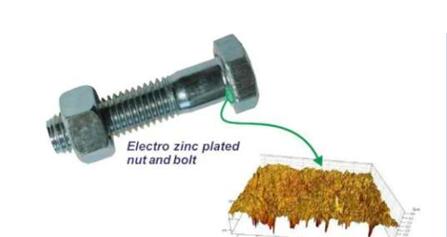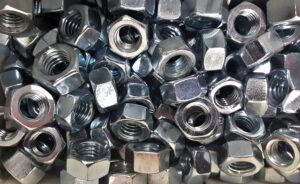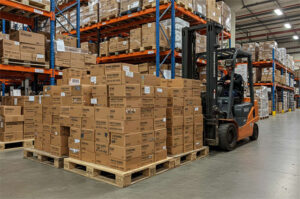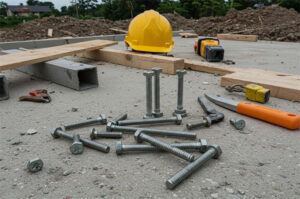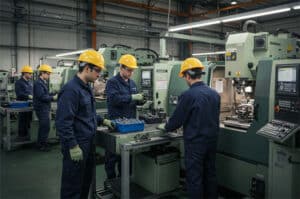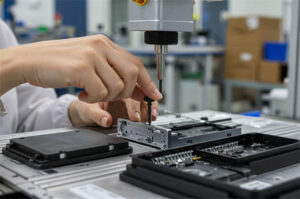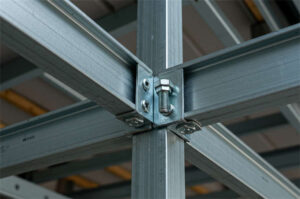Why Do Bolts Loosen? How to Prevent Bolts and Nuts Loosening?

The main reasons for loosening in bolts and nuts can be categorized into two; spontaneous loosening and slackening. In comparison, there are also far more causes as to why they can occur. Let’s get into a deep understanding of these instances.
Two Main Reasons Why Bolts Come Loose
Spontaneous Loosening
Its also referred to as rotational self-loosening, as this happens when bolts rotate from vibration or dynamic load and shock. Most common in applications to industries of automotive, aviation, and machinery. To prevent spontaneous loosening in bolts, using a locking wire can enhance its security and further options like eliminating or reducing the slip between the joints. Increasing the friction between the threads of bolts and nuts by using a fastener lubricant can also reduce the possibility of this kind of failure.
Slackening
This kind of failure in a bolt and nut assembly can be a result of many things; settlement, creep, and relaxation. Settlement refers to the critical results of dynamic load, which can, later on, develop a permanent deformation or fatigue over the fasteners and clamped materials. Creep occurs in long-term exposure to severe high-temperature environments. It can cause levels of stress beyond the yield strength and durability of materials. At the same time, relaxation happens when the microstructure elements of the materials restructure themselves to an existing plastic property causing them to deform over time.
The key to avoiding the types of fatigue in these fasteners is good manufacturing design and a high preload of bolts.
The Causes of Loosening in Bolts
1. Under-tightening
By definition, this is when the bolts are applied in loose applications. The lack of clamping force in the bolt and nut makes an insufficient holding of the materials together. Under-tightening the joint leads to slippage between the individual section making an unwanted shear stress on the bolts to eventually break.
2. Vibration and Shock
Vibrations often occur in critical fastening; they refer to the transverse movements between the objects and causing them to move parallel from one another. Fasteners like bolts and nuts are designed to tolerate maximum friction from repeated movements such as vibrations. But when the maximum tolerance is overstretched, the mating threads unwind and lose their clamp force.
Shock is an instant and dynamic load of sudden force that can apply alternating load in the joint. The repeated sequence of shock can ultimately result in a direct loosening of the bolt assembly.
3. Embedding
Micro-embedding of bolts and nuts is a process that determines the specific tension they can take. When bolts lack this characteristic and are poorly designed, they will succumb to improper tension in the embedded joint, leading them to lose the clamping force.
4. Gasket Creep
A flexible gasket is inserted between the head of the bolt and the surface of the material in some applications. This method can seal the joints against gas or liquid leaks. The gasket also acts as a spring that pushes the pressure in the assembly. With the presence of destructive elements, high-temperature, corrosive chemicals, and others, the gasket may creep or loss its springiness. With the loss of pressure and clamp force, the bolts become loose.
5. Differential Thermal Expansion
This happens when the properties of the fasteners do not correspond to the elements of its surrounding. The difference can cause thermal issues and chemical changes in the materials leading them to quickly respond to a rapid contact of loosening.
How to prevent loose bolts? Enhance your bolts and nuts assembly!
Nobody likes the failure in fastening as they only give further headaches and destruction of materials or, worst, the whole project. This is why experts have provided the perfect solutions to prevent undesirable situations from happening by enhancing the components. The following list below is the types of safety preventions that are applied in bolts and nuts assembly.
1. Washers
A non-permanent type of fastener that is usually circular with a hole in the middle, inserted between the bolt and nut, and sometimes in screws. Washers help in distributing the load received by the assembly to secure the slip area by locking a tight grip of materials together. There are a variety of types of washers that can propose different functionality.
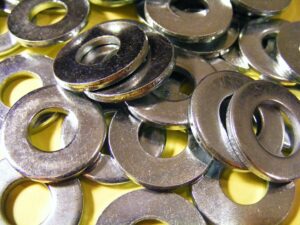
Generally referred to as lock nuts. This is another type of mechanical fastener device that is usually in nylon or metal. When inserted inside a nut, they add friction to the assembly.
3. Double nuts
Another type of fastener is under the category of nuts. They are the standard component but only doubled in application to the bolts. Usually applied to lock both ends of the bolt with a considerable clamping force, tightening the assembly with the extra grip.
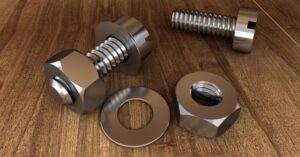
Adhesives can be referred to multiple kinds of applicants on bolts and nuts. They can be liquid adhesives, coatings, or even solid adhesive patches. They share a common function to ensure the tightness of the assembly, preventing them from coming loose.
More Questions? Contact us now to get your inquiries answered! Prince Fastener is your one-stop fastener manufacturer and supplier for every kind of fastening application.
